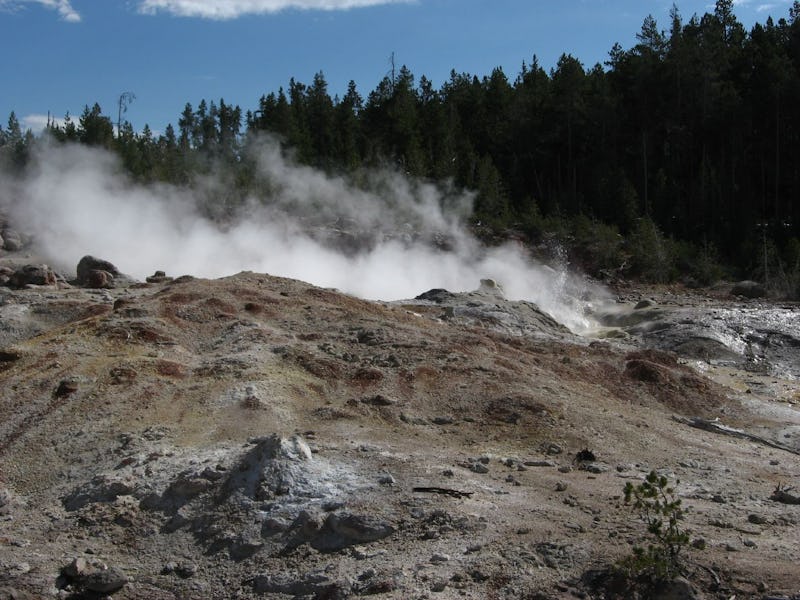A Swarm of 200 Earthquakes Rocked the Ground Beneath Yellowstone's Volcano
Sounds scary, but scientists aren't worried.

Over the past few days, an earthquake swarm has shaken the supervolcano that lies beneath Yellowstone National Park. Between February 8 and February 18, the region experienced over 200 earthquakes, according to the United States Geological Survey. This might sound super scary, especially if you’ve read that this caldera could cause a volcanic winter when it erupts.
But since we’ve all experienced more than enough existential dread this month, let’s get one thing straight: The Yellowstone Caldera is not about to erupt, and it is not about to blanket the United States in lava and ash because of a seemingly large number of earthquakes.
For one thing, this earthquake swarm — a flurry of small quakes without one large initiating quake — is not a new phenomenon. In 2017, Yellowstone experienced a similar swarm, and experts say this swarm could just be lingering seismic activity from last year. According to the National Parks Service, earthquake swarms in Yellowstone are “common”: the largest happened in 1985 when over 3,000 earthquakes shook the northwest side of the park over the span of three months. It didn’t trigger any volcanic explosions then, and it will not now, say scientists.
Hot springs in Yellowstone lie north of the caldera system.
The last time this supervolcano erupted was over 70,000 years ago. In the time that modern scientists have been studying it, they’ve concluded that Yellowstone, even though it sits on top of a giant well of subterranean lava and experiences 1,000 to 3,000 earthquakes a year, has extremely low odds of erupting.
If there is going to be an eruption, geologists will be able to tell well in advance. USGS scientists say the current flurry of quakes is not a warning of an impending eruption.
Since the park experiences earthquakes so frequently, the fact that this swarm has yielded so many small quakes should not be worrisome. Add to that the fact that they really are tiny quakes, and our fears should be put to rest. The largest earthquake in this swarm has only registered a magnitude of 2.9, making it a very weak earthquake. To put it simply, you might not feel a 2.9 earthquake if you’re standing where it happened. Additionally, the quakes have been dozens of miles below the Earth’s surface.
So, for anyone who’s worried that the Yellowstone supervolcano will end life as we know it, there’s no need to worry. But if you were hoping it would put a quick end to our misery, take comfort in the fact that there’s probably another existential threat right around the corner.